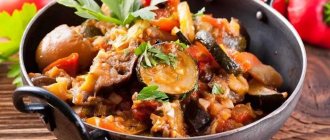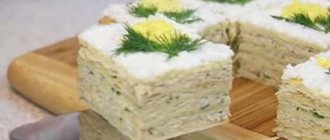Baursak is one of the varieties of traditional bread among the Turkic peoples; it looks like square or round donuts that are fried in oil. The ingredients of the dough may differ depending on which people the recipe belongs to. You can prepare baursaks from unleavened or yeast dough. There are options for cottage cheese donuts. Baursaks are served with tea, with everyday dishes, and as a holiday meal on their own. All kinds of honey syrups can also be served with them. The history of this dish is connected with the nomadic way of life that the Turkic peoples had. In such conditions, the preparation of bread had to be quick and easy, and difficult traveling conditions were also taken into account. The easiest method, it turned out, was to knead the sour dough and fry it in lard using whiskers. In addition to the fact that the bread turned out to be very satisfying, thanks to the oil film that covered the entire piece, it remained soft inside for a long time.
Modern baursaks are prepared in a cauldron, in a frying pan or deep-fried. Among the Turkic peoples, almost no traditional holiday is complete without these delicious donuts.
Baursaki on kefir without yeast
For preparation we will need the following ingredients:
- Vegetable oil
- Two tablespoons of sugar
- 800 grams of flour
- One tablespoon of vegetable oil
- One teaspoon of soda
- 500 milligrams of kefir
- One egg.
Preparation
Now we will tell you how to cook baursaki using kefir. So, pour homemade kefir into a bowl, add salt, sugar, vegetable oil, break the egg and mix everything until smooth. Then add a little soda and lightly beat our composition.
After this, gradually add sifted flour and knead into a smooth, homogeneous dough. Now we transfer it to the table for 15 minutes and leave it to rest. Next, divide it into two equal parts, roll each into a small roller and cut into equal pieces.
Form each piece into a ball with your hands and fry until golden brown over moderate heat in boiling oil, turning occasionally. Then carefully transfer the baursaks onto a paper towel to remove excess oil, and only after that should you serve.
Recipe for baursaks with kefir
For preparation we will need the following ingredients:
- Vegetable oil for frying
- Two kilograms of wheat flour
- If desired, you can use sesame seeds
- 150 milligrams of boiled water
- A pinch of baking soda
- 30 grams margarine
- A pinch of sugar
- A pinch of salt
- Cinnamon optional
- One liter of milk
- One liter of kefir.
Preparation
Let's take a look at another way to make baursaki using kefir. It turns out that it’s easier than ever to do this – you just need half an hour of free time and desire. So, pour a liter of kefir into a saucepan, pour in the same amount of milk, add a pinch of sugar and salt.
Mix everything well, heat the mixture slightly until the crystals completely dissolve. Boil half a glass of water separately, add a piece of margarine, melt it and add a pinch of baking soda. Mix all this thoroughly.
Now knead the dough vigorously, add sesame seeds or cinnamon if desired, cover it all and leave to stand for 15 minutes. After this, we form small balls and fry them until golden in a large amount of vegetable oil.
Kazakh baursaks made with kefir
To prepare Kazakh baursaks we will need the following ingredients:
- Vegetable oil for frying
- Vanillin to taste
- 2.5 kilograms of wheat flour
- 50 grams butter
- 150 milligrams of water
- 10 grams granulated sugar
- 60 grams of salt
- One liter of kefir
- One liter of state milk.
Preparation
In order to prepare the dough for baursaks, mix milk with kefir in a deep bowl, add salt and sugar (the amount is indicated in the recipe). Pour water into another ladle, bring it to a boil, add 30 grams of butter and add a pinch of baking soda.
Mix everything thoroughly. Now gradually add all the flour and knead a homogeneous dough: not soft, but not hard either. Next, cover it with a towel and leave it warm for 30 minutes.
Then we roll out the dough into a layer approximately three centimeters thick, cut out identical diamonds from it and fry them until golden brown in a large amount of oil. After that, carefully transfer them to a paper towel and blot them lightly to get rid of excess oil. Well, that's all, we got a lot of soft, fluffy and tasty baursaks made with kefir.
Yeast dough option
Using the method outlined below, you can make a sweet Kazakh dessert relatively quickly. It will be a good addition to friendly gatherings over a cup of aromatic hot tea. This recipe for baursaki with kefir and yeast is slightly different from the previous version. Therefore, inspect the contents of your own kitchen in advance. This time there should be:
- ½ teaspoon each of baking soda, salt and dry yeast.
- 185 milliliters of kefir of any fat content.
- A couple of tablespoons of good vegetable oil and sugar.
- 280 grams of high-grade wheat flour.
Baursaki
To prepare this dish we need the following ingredients:
- 15 grams salt
- 200 grams of vegetable oil
- 30 grams ghee
- 150 milligrams of milk
- 50 grams of sugar
- 10 chicken eggs
- One kilogram of flour
- A pinch of soda
Preparation
First of all, break chicken eggs into a suitable container, pour milk into it, add yeast, butter, sugar and salt. You don’t have to worry about trembling, it doesn’t play a special role.
When all the ingredients are in place, mix everything thoroughly until the sugar and other ingredients are completely dissolved in the mixture. Add flour into the resulting homogeneous mixture in small portions, stirring all the time so that lumps do not form.
Pinch off a small piece from the dough and roll it into a sausage, then cut it into small pieces.
Fry the resulting pieces in boiling oil until golden brown.
When the baursak is ready, you should put it in a colander and let the oil drain and dry a little. Until the baursak dries, you can sprinkle it with powdered sugar.
Delicious baursaks
To prepare this dish we need the following ingredients:
- Vegetable little for frying
- Two tablespoons of mayonnaise
- 50 grams butter
- Two chicken eggs (large, preferably homemade)
- 1.5 teaspoons salt
- One teaspoon of granulated sugar
- One kilogram of wheat flour
- Two glasses of milk
Preparation
First of all, warm it up to room temperature. Pour a little milk into a small cup and dissolve granulated sugar in it.
Now you need to sift the flour into a deep cup and then mix it with salt. When sifting flour, it is saturated with oxygen, which subsequently makes the dough more spongy and fluffy.
Beat the eggs into the warm remaining milk and stir thoroughly. We also add a couple of spoons of mayonnaise, it will make the dough more crumbly. Mix everything thoroughly.
butter and let it cool slightly. Then add it to the total mass, also add the milk mixture prepared in advance, and knead the dough into baursaks. Add flour as needed. If your dough turns out to be too crumbly, then beat another egg into the dough, it will bind the remaining flour. The result should be a soft dough, which should be placed in a deep cup and covered with a napkin.
After an hour, you will need to place the dough on the table surface and roll out a layer 1-1.5 centimeters thick. Afterwards, cut the dough layer into squares or small rectangles.
You can also use a glass to cut out baursaks, in this case you will get round baursaks that resemble donuts. You can also roll up a small sausage with a diameter of about one centimeter and use a knife to cut off small pieces, although you can cut them off with your hands.
Thus, you will get small pieces that will be crispier after frying than large square or rectangular baursaks. And such baursaks should be deep-fried, stirring with a slotted spoon.
There is another funny shape for baursaks - this is a braid; your children will definitely love this kind of pastry.
Heat fat or oil in a deep frying pan. There should be a lot of oil so that the dough floats in it so that it is fried on all sides. Now that the oil has warmed up well and white smoke has appeared, it’s time to lower the prepared dough into the frying pan. Fry the baursaks on both sides until they are beautifully golden brown; fry over medium heat until the baursaks are cooked through.
Place the prepared baurski on a large dish and cover immediately with a napkin so that they do not have time to cool, since it is customary to serve hot baked goods. Although these baked goods are great cold, they do not go stale for a long time.
Excerpt characterizing Baursak
mountains, defending themselves from superior enemy forces, and abandoning all hope of communication with Buxhoeveden. If Kutuzov had decided to retreat along the road from Krems to Olmutz to join forces with troops from Russia, then he risked being warned on this road by the French who had crossed the bridge in Vienna, and thus being forced to accept battle on the march, with all the burdens and convoys, and dealing with an enemy three times his size and surrounding him on both sides. Kutuzov chose this last exit. The French, as the spy reported, having crossed the bridge in Vienna, were marching in an intensified march towards Znaim, which lay on Kutuzov’s retreat route, more than a hundred miles ahead of him. To reach Znaim before the French meant to have great hope of saving the army; to allow the French to warn themselves in Znaim would probably mean exposing the entire army to a disgrace similar to that of Ulm, or to general destruction. But it was impossible to warn the French with their entire army. The French road from Vienna to Znaim was shorter and better than the Russian road from Krems to Znaim. On the night of receiving the news, Kutuzov sent Bagration’s four-thousand-strong vanguard to the right over the mountains from the Kremlin-Znaim road to the Vienna-Znaim road. Bagration had to go through this transition without rest, stop facing Vienna and back to Znaim, and if he managed to warn the French, he had to delay them as long as he could. Kutuzov himself, with all his hardships, set out for Znaim. Having walked with hungry, shoeless soldiers, without a road, through the mountains, on a stormy night forty-five miles, having lost a third of the stragglers, Bagration went to Gollabrun on the Vienna Znaim road several hours before the French approached Gollabrun from Vienna. Kutuzov had to walk another whole day with his convoys to reach Znaim, and therefore, in order to save the army, Bagration, with four thousand hungry, exhausted soldiers, had to hold off for a day the entire enemy army that met him in Gollabrun, which was obvious , impossible. But a strange fate made the impossible possible. The success of that deception, which gave the Vienna bridge into the hands of the French without a fight, prompted Murat to try to deceive Kutuzov in the same way. Murat, having met Bagration’s weak detachment on the Tsnaim road, thought that it was the entire army of Kutuzov. In order to undoubtedly crush this army, he waited for the troops that had fallen behind on the road from Vienna and for this purpose proposed a truce for three days, with the condition that both troops would not change their positions and would not move. Murat insisted that negotiations for peace were already underway and that, therefore, avoiding useless shedding of blood, he was offering a truce. The Austrian general Count Nostitz, who was stationed at the outposts, believed the words of the envoy Murat and retreated, revealing Bagration’s detachment. Another envoy went to the Russian chain to announce the same news about peace negotiations and offer a truce to the Russian troops for three days. Bagration replied that he could not accept or not accept a truce, and with a report of the proposal made to him, he sent his adjutant to Kutuzov. The truce for Kutuzov was the only way to gain time, give Bagration’s exhausted detachment a rest and allow convoys and loads to pass through (the movement of which was hidden from the French), although there was one extra march to Znaim. The offer of a truce provided the only and unexpected opportunity to save the army. Having received this news, Kutuzov immediately sent Adjutant General Wintzingerode, who was with him, to the enemy camp. Wintzingerode had to not only accept the truce, but also offer terms of surrender, and meanwhile Kutuzov sent his adjutants back to hurry as much as possible the movement of the convoys of the entire army along the Kremlin-Znaim road. The exhausted, hungry detachment of Bagration alone had to, covering this movement of the convoys and the entire army, remain motionless in front of an enemy eight times stronger.
Baursaki made from frozen eggs
Such baursaks turn out to be very tasty; they should be served hot, and some skill will be required when frying. To prepare this dish we need the following ingredients:
- 300 milligrams vegetable oil for deep frying
- Two glasses of flour
- Two tablespoons of sunflower oil
- Half a teaspoon of soda
- Half a teaspoon of salt
- Ten chicken eggs
Preparation
You get fluffy baursaks if you knead the dough from vegetable oil, flour and eggs. To get the main ingredient, you need to slightly crack the shells on top of the eggs, place them with the cracked end up and place them in the freezer for an hour and a half.
Break the eggs into a bowl, add vegetable oil, soda, salt and mix well. Since the yolks of frozen eggs are hard, it is best to do this using a potato masher. Adding flour gradually, knead a hard, thick dough.
Heat the oil. Separate lumps the size of a thimble from the dough, roll into balls and lower into deep fat. These baursaks increase significantly in size when fried. Place the prepared balls on a napkin to drain off excess oil.
Description
As a rule, it is prepared from unleavened or yeast dough in the form of small donuts (diamond-shaped or round), made by deep-frying in a cauldron. There are also recipes for curd baursaks. Usually served as an addition, for example, to shurpa, or to tea (for the Tatars only for tea, for the Uyghurs for the tea drink atkanchay).
Baursak is an indispensable attribute of the festive dastarkhan. Plays an important role in the wedding ceremonies of the Bashkirs and other peoples. In the Tatar wedding tradition, the parents of the groom (for the Siberian Tatars, the bride) brought a dish with baursaks or chak-chak as a wedding gift; in the Kazakh tradition, baursaks or kurts, along with coins and sweets, were scattered over the heads of the newlyweds. In Uzbek cuisine, baursaks are considered a ritual dish. Among the Turkmen they are called peshme and have a diamond shape. The Turks call it lokma ( tur.
lokma).
Sweet baursaks
To prepare this dish we need the following ingredients:
- 300 milligrams vegetable oil
- One level teaspoon of salt
- One tablespoon of sugar
- Two tablespoons of sour cream
- Four chicken eggs
- Two glasses of milk
- 3.5 cups premium flour.
Preparation
Heat the milk to thirty degrees, add sugar to it. Afterwards you should also add sour cream, salt and eggs. All ingredients should be at room temperature. Mix everything thoroughly to get a homogeneous mixture, gradually add sifted flour.
Knead a soft dough and leave it for about twenty minutes to rest. It turns out that according to this recipe, elastic, smooth dough for baursaks, this recipe can be changed slightly, for example, adding more sugar to make a dessert, or replacing milk with whey, then the dough will be lighter.
Divide the resulting dough into 6-8 koloboks, stretching and rolling to the sides, form into ropes and cut into small pieces the size of a medium-sized walnut. Deep fry our baursaks until rich golden brown, stirring all the time.
Recipe for baursaks with filling
This recipe is a new take on a traditional Asian dish. Prepare the dough, then add the remaining ingredients for the dough and knead it. Place the dough in the refrigerator. Remove the pits from the apricots and fill the void with almond filling.
Roll out the dough, cut out circles from it. Place a stuffed apricot on each circle, then pinch the edges of the dough. Deep fry the stuffed baursaks until golden brown. Prepare the rum sauce. Sprinkle the baursaki with powdered sugar, pour over the rum sauce and serve.
Ingredients
- Flour - 500 grams
- Sugar - 100 grams
- Butter – 150 grams
- Yeast – 20 grams
- Almonds – 55 grams
- Brown sugar - 110 grams (can be replaced with regular sugar)
- Milk – 200 Milliliters
- Cream - 60 Milliliters
- Eggs – 2 pieces
- Rum - 2 tbsp. spoons
- Cinnamon - 0.5 teaspoons
- Apricots – 30 pieces
Step by step recipe
- Dissolve half the white sugar (50 g) and yeast in warm milk and leave for 10 minutes. Then add 50 gr. butter, flour, eggs, 1 tbsp. l. rum, knead the dough. Let it rise for 1.5 hours.
- In the meantime, you can start filling. Grind the almonds, add 50 g. butter, the rest of white sugar (50 gr.), a spoonful of flour, a teaspoon of rum and two teaspoons of milk. Mix thoroughly and then put in the refrigerator for half an hour. Remove the pits from the apricots and replace them with almond filling. Glue the two apricot halves together.
- Roll out the dough, cut out circles from it (you can use a glass for this). Place apricot with filling on each circle of dough.
Preparing baursak dough: recipe
Ingredients:
- 700 g flour
- 10 g dry yeast
- 1 glass of milk
- 1 glass of water
- 50 g vegetable oil
- 1.5 tsp. Sahara
- 1 tsp salt
- 1 l. frying oils
The simplest and therefore most interesting step in any recipe is to mix the ingredients together and watch them slowly but surely come together. Mix yeast and sugar in one bowl, then pour in water and milk, mix well and leave for about 15 minutes. Water and milk should be warm, so if they come straight from the refrigerator, you should warm them up a little.
Next, mix the flour with salt, add a mixture of milk and water, vegetable oil and knead the dough. Cover the dough with a towel and place it in a warm place for an hour and a half. After this time, the dough can be shaped a little and left to rise again, this time for only 30-40 minutes.
As soon as the dough is ready, you need to remove it from the bowl and roll it out on any surface convenient for you. Using a glass, cut out as many circles of dough as you can. The remaining dough can be cut into diamonds or any other shape. You can use your imagination.
Cover the dough again with a towel and let it rest for about 20 minutes before dropping it into the hot oil for the final stage of cooking. Ideally, baursaks should have a golden hue, so don't leave them floating in oil as long as you like.
If you want to get acquainted with famous dishes of other national cuisines, be sure to pay attention to Kazakh bread - baursak
. This dish is a brother of our Kolobok, and fairy tales are also written about it. Baursaki is a traditional dish of the Kazakh New Year - Navruz. “It’s just bread!” - you say. Yes, but Kazakhs have a very respectful attitude towards bread. And the name of the dish translated means “the desire for unification, kinship” - and it is prepared by the whole family. I suggest you follow their example and spend time with your family while preparing this delicious dish.










